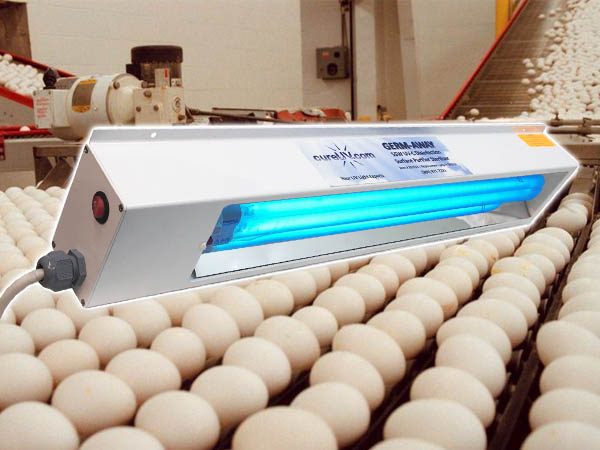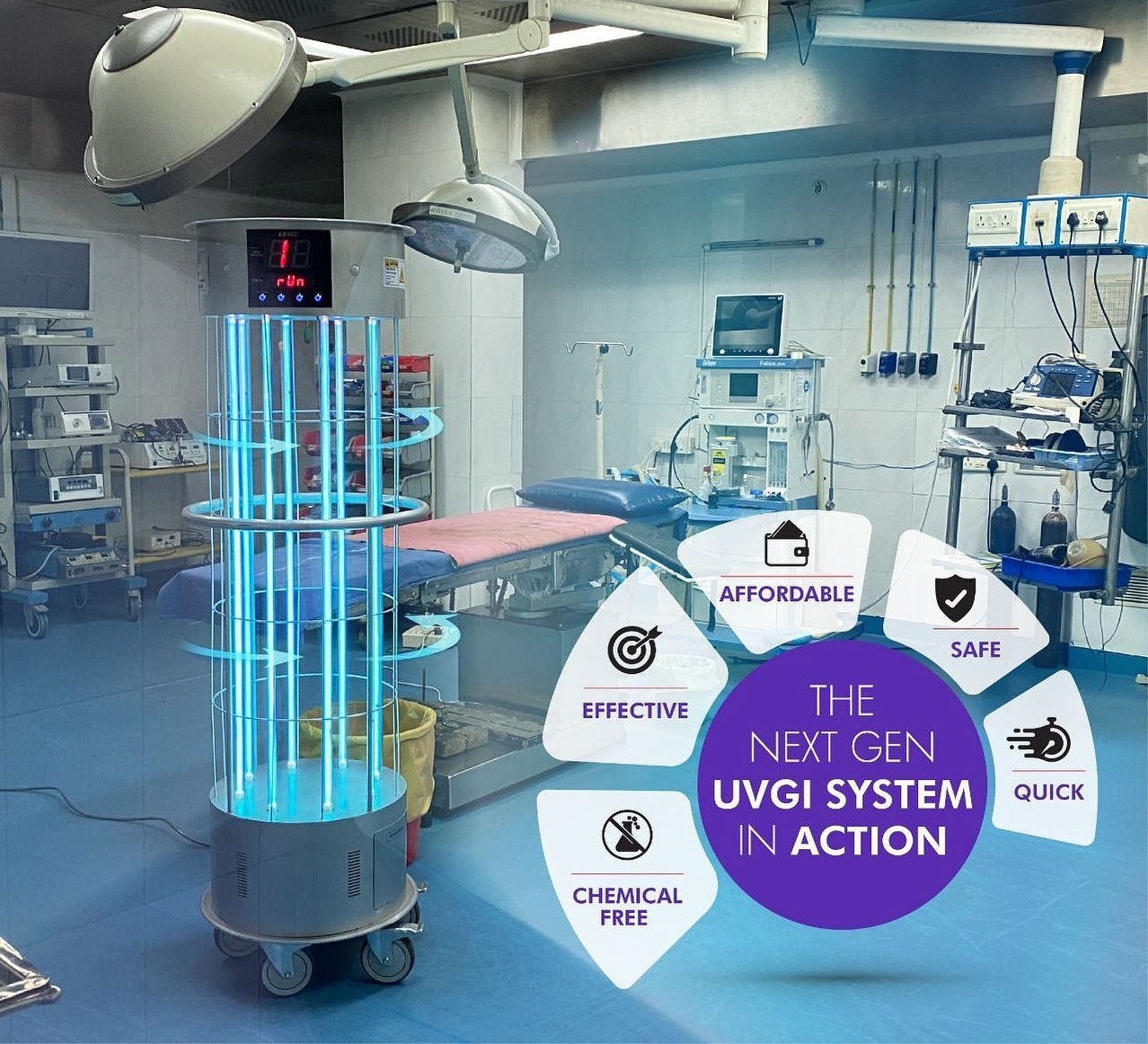Utilizing the Potential of UV Disinfection: Shielding Wellness and Health
UV sanitation, a technology extensively made use of in different markets, has actually verified efficient in getting rid of harmful virus. From understanding the devices at play to applying this innovation in our daily lives, this conversation intends to drop light on the capacity of UV disinfection and its duty in safeguarding our health and wellness and health.
Recognizing UV Disinfection
UV disinfection is a highly reliable and commonly used technique for making sure and removing unsafe microorganisms health and hygiene. This technique uses ultraviolet (UV) light to suspend microbes by harming their DNA and preventing them from replicating. UV disinfection is particularly effective against germs, viruses, and other microorganisms that can create diseases and infections.
The concept behind UV sanitation is easy yet powerful. UV sanitation can be applied in various setups, including water treatment plants, medical care facilities, food handling sectors, and air purification systems.
Among the advantages of UV disinfection is its ability to properly and successfully eliminate a large range of virus without the demand for chemicals or additives. Unlike various other disinfection methods, such as chlorine or ozone, UV sanitation does not introduce hazardous by-products or chemical residues into the environment. Furthermore, UV disinfection is a non-contact process, which indicates that it does not call for physical call with the microbes, decreasing the risk of cross-contamination.

The Science Behind UV Sanitation
The efficiency of UV disinfection exists in its capability to interrupt the hereditary material of microbes, providing them unable to reproduce and consequently eliminating their damaging potential. This high-energy UV-C radiation is most effective in sanitation applications because it can permeate the cell walls of bacteria and harm their DNA or RNA.
When microorganisms are exposed to UV-C radiation, the energy is taken in by their genetic product, causing bonds to damage and developing chemical responses that disrupt their ability to recreate. This stops the bacteria from spreading out and duplicating infection. UV disinfection is specifically effective against bacteria, infections, and fungis, including usual microorganisms such as Escherichia coli, Salmonella, and Influenza.
The science behind UV disinfection is sustained by extensive study and researches. It has been revealed that exposure to an enough dosage of UV-C radiation can achieve a high degree of sanitation, usually surpassing 99.9% efficacy in killing bacteria. It is vital to keep in mind that the efficiency of UV sanitation depends on various aspects, including the strength of UV-C radiation, direct exposure time, range from the UV resource, and the vulnerability of the microorganism to UV radiation (uv surface disinfection).
Applications of UV Disinfection
Given the considerable study and effectiveness of UV sanitation in interfering with the genetic material of microbes, it is vital to explore the different useful applications of this technology. UV disinfection has shown to be an important tool in a wide variety of sectors where maintaining a clean and risk-free atmosphere is essential.
One major application of UV sanitation remains in medical care setups. UV light can be utilized to decontaminate surfaces, equipment, and even the air in medical facilities and medical centers. This assists to lower the danger of healthcare-associated infections and makes certain a more secure setting for individuals and medical care workers.
An additional crucial application remains in the food and drink industry. UV disinfection is used to treat water and eliminate unsafe virus, such as E. coli and Salmonella, from the production procedure. uv surface disinfection. This ensures the safety and security and quality of the products we take in
UV disinfection is also extensively made use of in water therapy plants and wastewater treatment facilities. It is an efficient approach for destroying damaging microorganisms, infections, and parasites that can be existing in water resources. This assists to provide risk-free and clean drinking water to communities and secure the setting from pollution.
Furthermore, UV sanitation is employed in the pharmaceutical market to sanitize devices and keep the honesty of items. It is additionally used in laboratories and research study centers to stop contamination and guarantee precise outcomes.
Benefits of UV Disinfection Modern Technology
One notable advantage of employing UV disinfection modern technology is its capacity to properly get rid of microbes without making use of rough chemicals. This is especially useful in various setups, such as health care facilities, water treatment plants, and food processing markets, where the visibility of hazardous pathogens poses a significant danger to public wellness and safety.
Unlike traditional disinfection techniques that rely upon chemicals like chlorine or ozone, UV disinfection technology uses ultraviolet light to target and ruin the DNA of bacteria, successfully counteracting their capability to replicate and trigger infections. This process not just removes the requirement for possibly hazardous chemicals however likewise lowers the threat of chemical residue or results remaining in the treated environment.

Furthermore, UV disinfection innovation is eco-friendly. As sites it does not rely upon making use of chemicals, it removes the need for their production, disposal, and transportation, reducing the general carbon impact linked with sanitation processes. Additionally, UV disinfection systems have a longer lifespan compared to chemical-based methods, resulting in less frequent substitute and more lowering waste.
Applying UV Disinfection in Life
To efficiently execute UV disinfection in everyday life, individuals and organizations can integrate portable UV sanitizing gadgets into their hygiene regimens and cleansing methods. These gadgets are developed to give off ultraviolet light, which has been shown to kill or suspend a wide variety of bacteria, including infections, bacteria, and fungi. By utilizing mobile UV disinfecting gadgets, individuals can decontaminate generally touched surfaces and things, such as mobile phone, laptop computers, tricks, and doorknobs, decreasing the threat of spreading out germs and infections.
Along with including portable UV disinfecting devices, it is essential to follow proper standards and recommendations for efficient UV disinfection. This consists of making certain that the tool is utilized appropriately and for the suggested period to accomplish optimum sanitation results. It is likewise critical to prioritize safety and security measures, such as wearing safety eyewear and preventing straight exposure of the UV light to the skin.

Moreover, organizations can implement reference UV disinfection technology in various setups to boost health practices. As an example, hospitals and medical care facilities can utilize UV sanitation robotics to sanitize patient areas, operating theaters, and various other high-touch locations. Food handling markets can integrate UV sanitation systems into their manufacturing lines to improve food safety and stop contamination.
Conclusion
In verdict, UV disinfection technology holds fantastic possible in protecting wellness and health. By utilizing the power of ultraviolet light, it successfully eliminates unsafe bacteria and lowers the danger of infections. This modern technology can be applied in different setups, such as health centers, water treatment centers, and public rooms, offering a effective and secure method of disinfection. With its many benefits, UV disinfection is get more an important device for preserving a tidy and healthy setting.
Unlike other disinfection techniques, such as chlorine or ozone, UV sanitation does not present harmful spin-offs or chemical residues right into the environment. It is vital to keep in mind that the efficiency of UV sanitation depends on numerous factors, consisting of the intensity of UV-C radiation, exposure time, range from the UV source, and the susceptibility of the bacterium to UV radiation.
One more advantage of UV disinfection innovation is its ability to offer fast and constant disinfection. Unlike handbook cleansing approaches, which can be taxing and call for substantial labor, UV sanitation systems can be automated and operate constantly, making sure constant sanitation without human intervention.To successfully carry out UV disinfection in daily life, companies and people can integrate portable UV disinfecting tools into their hygiene routines and cleansing techniques.